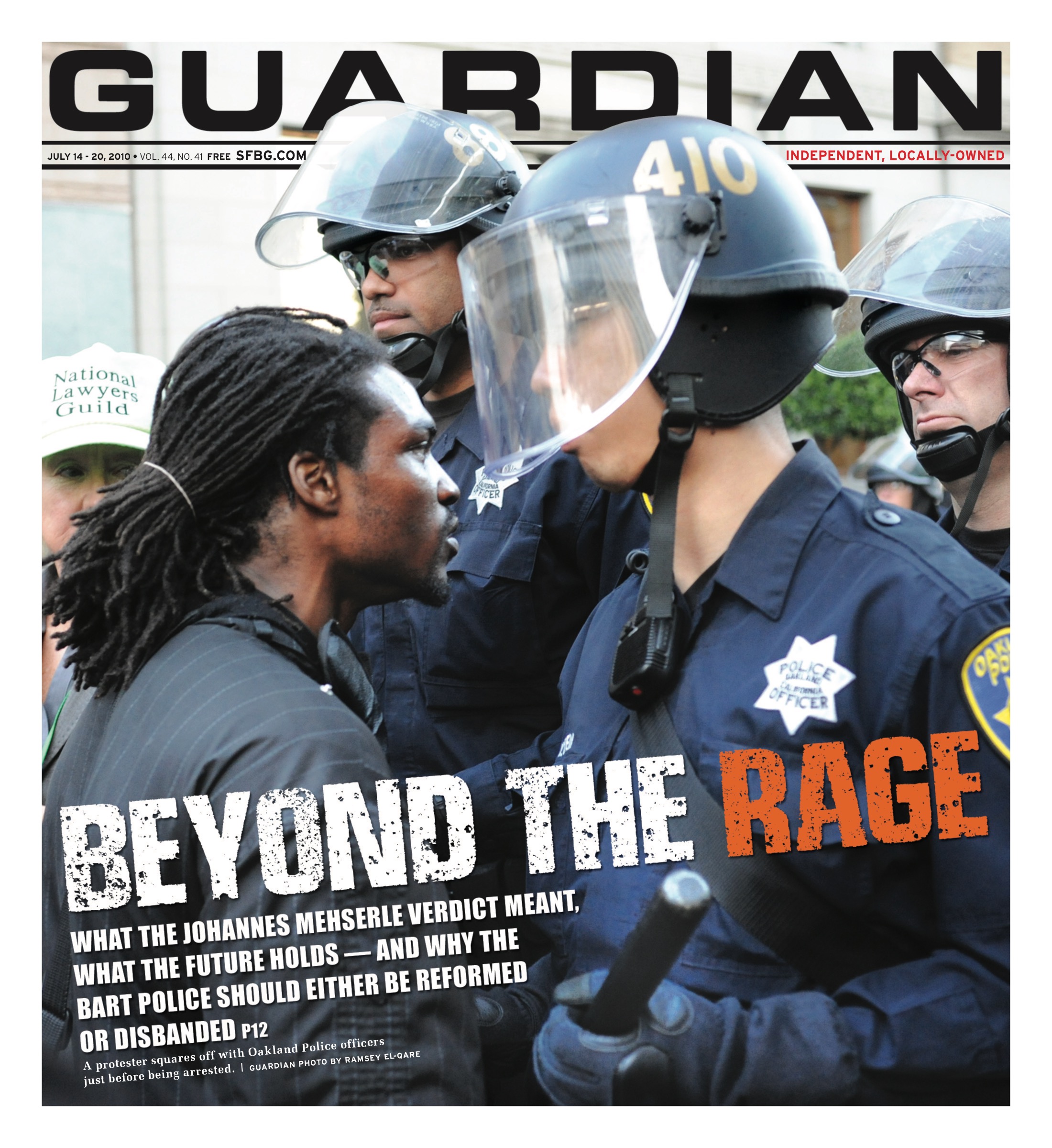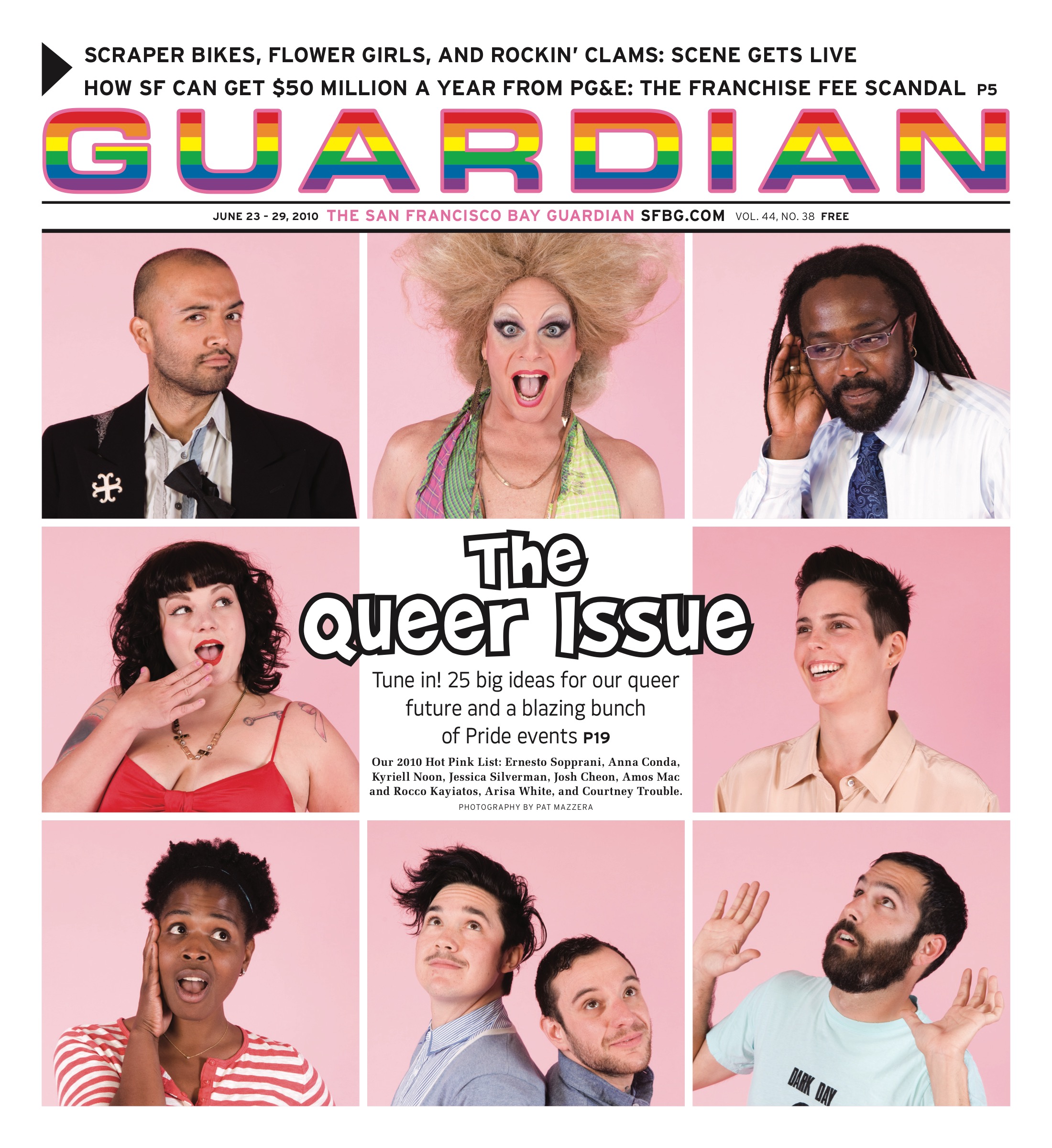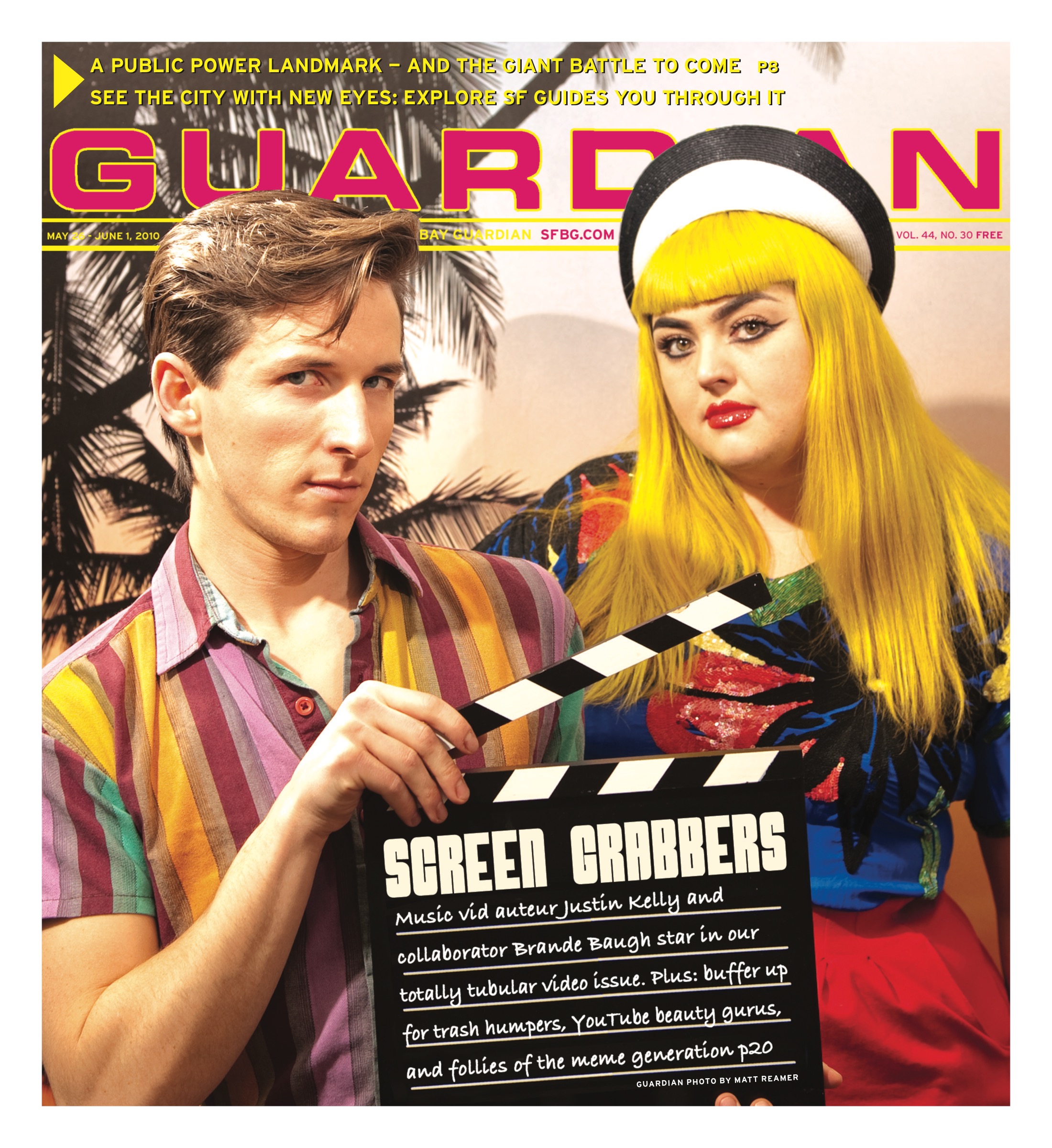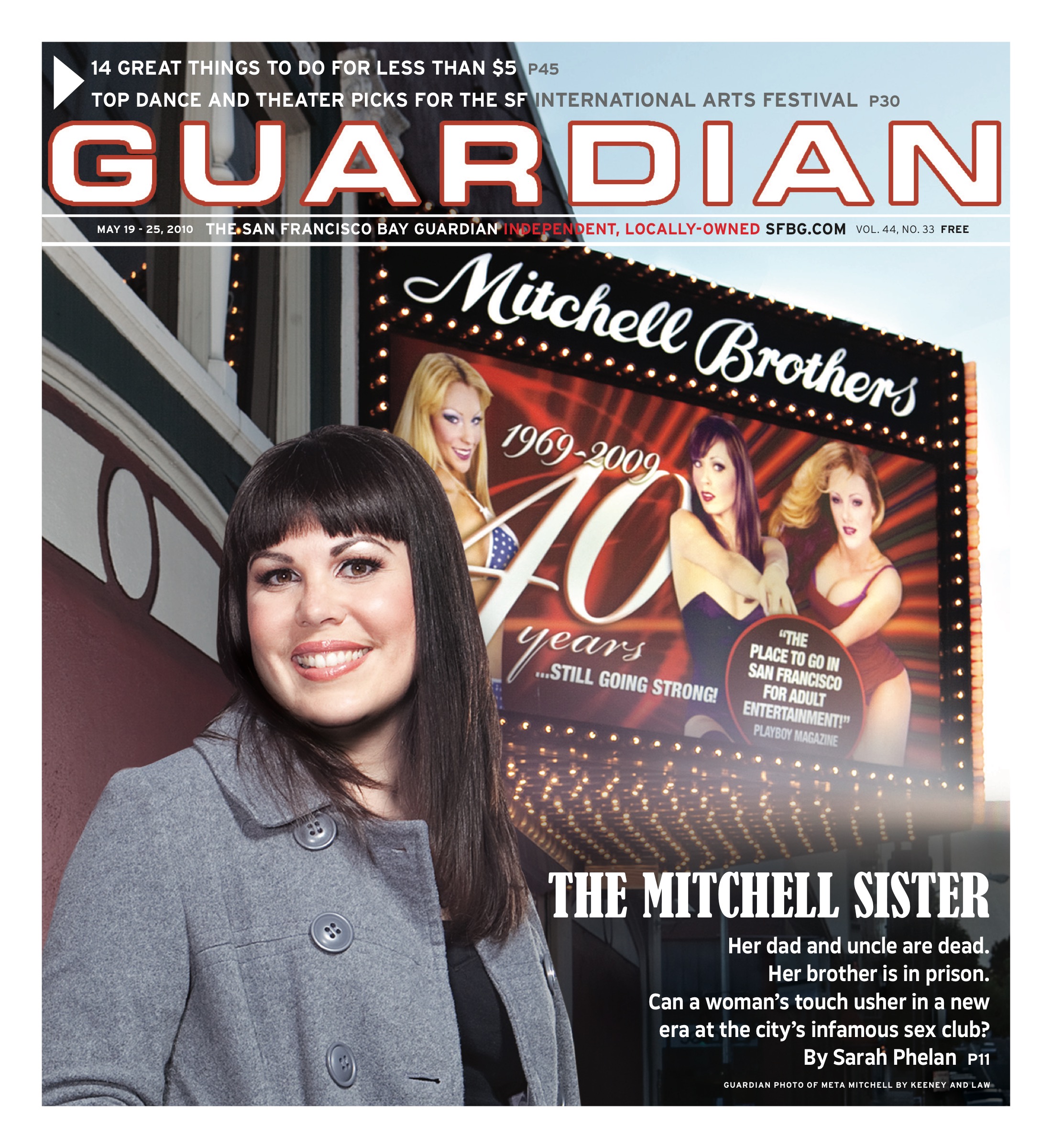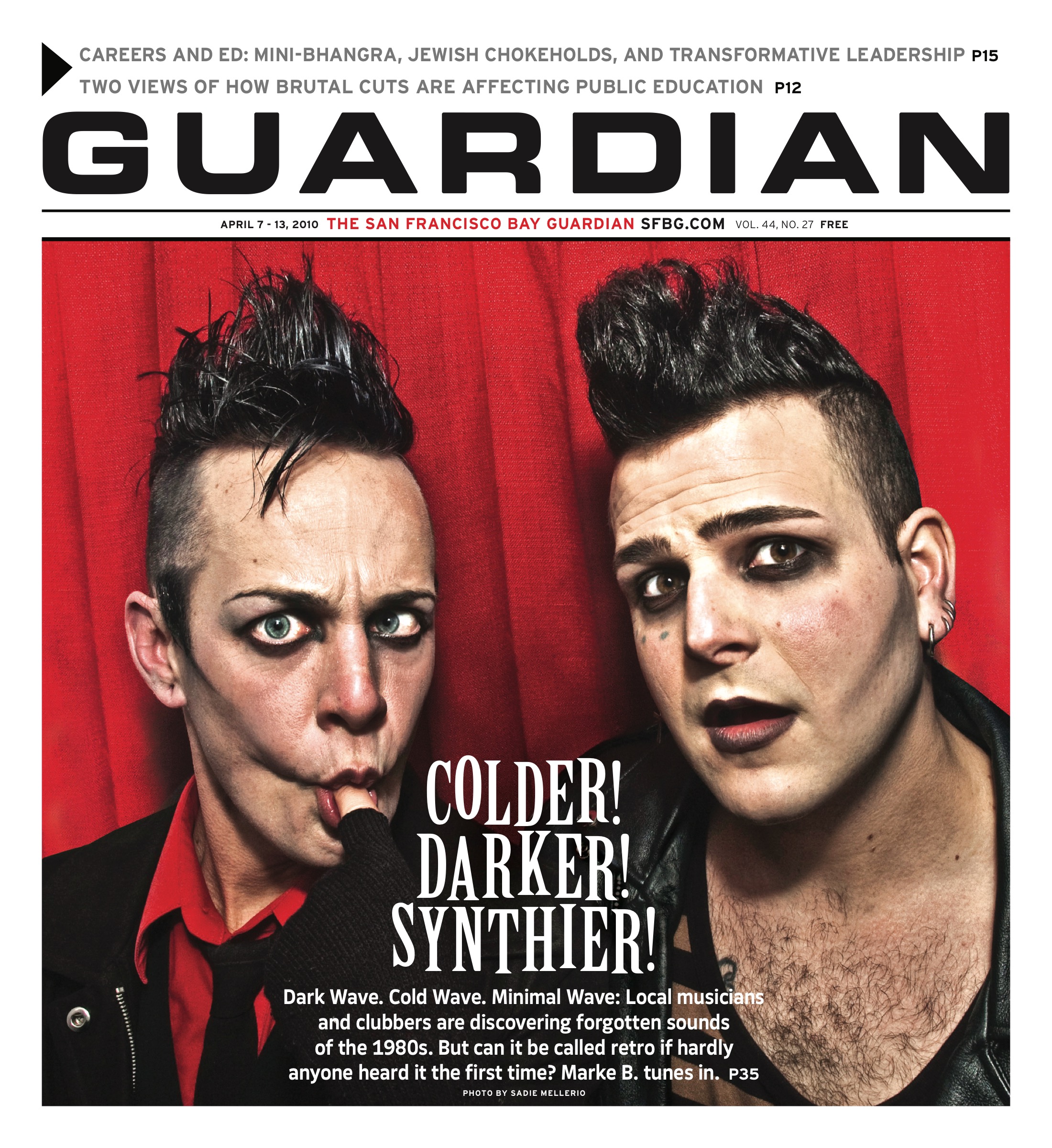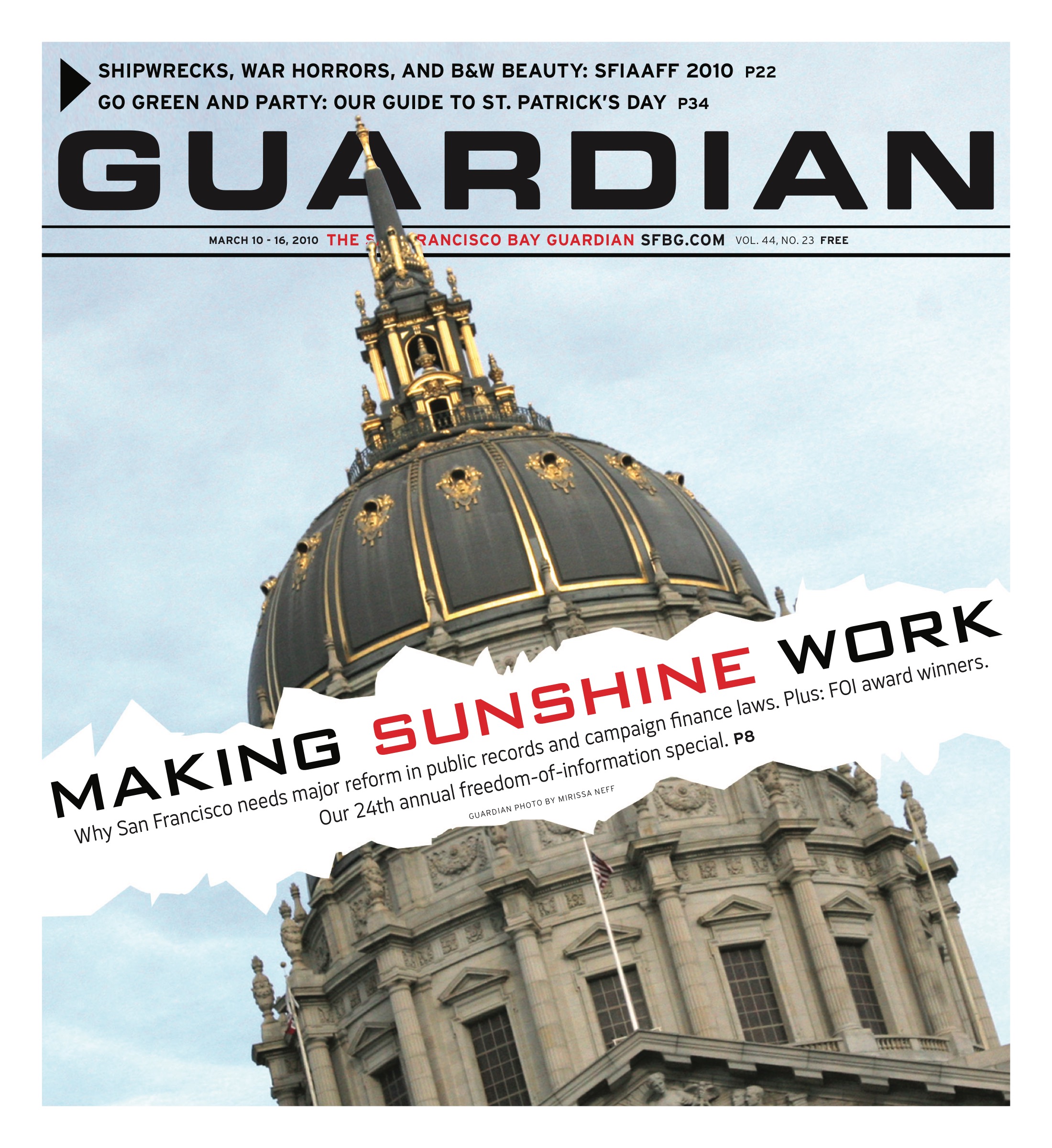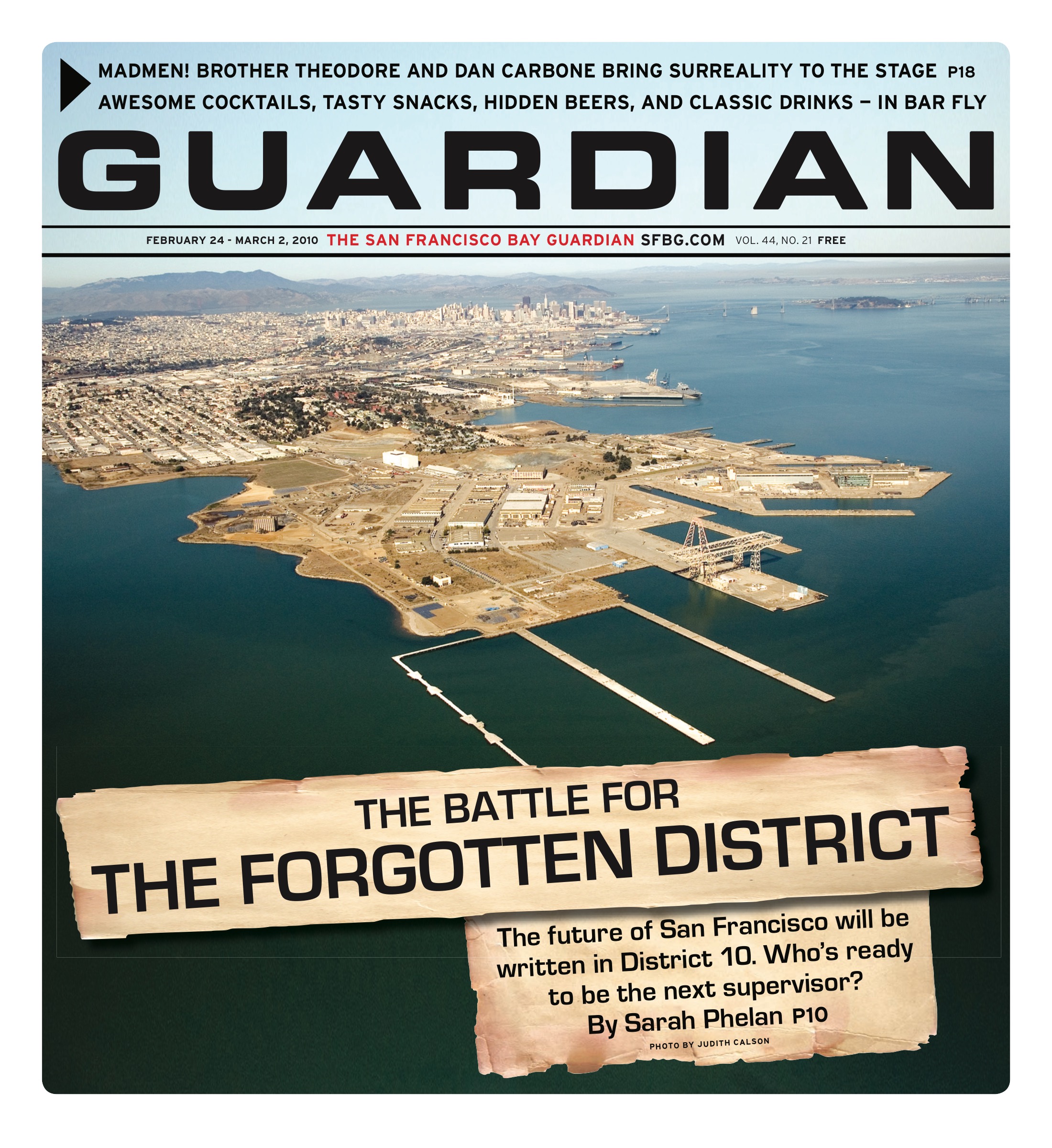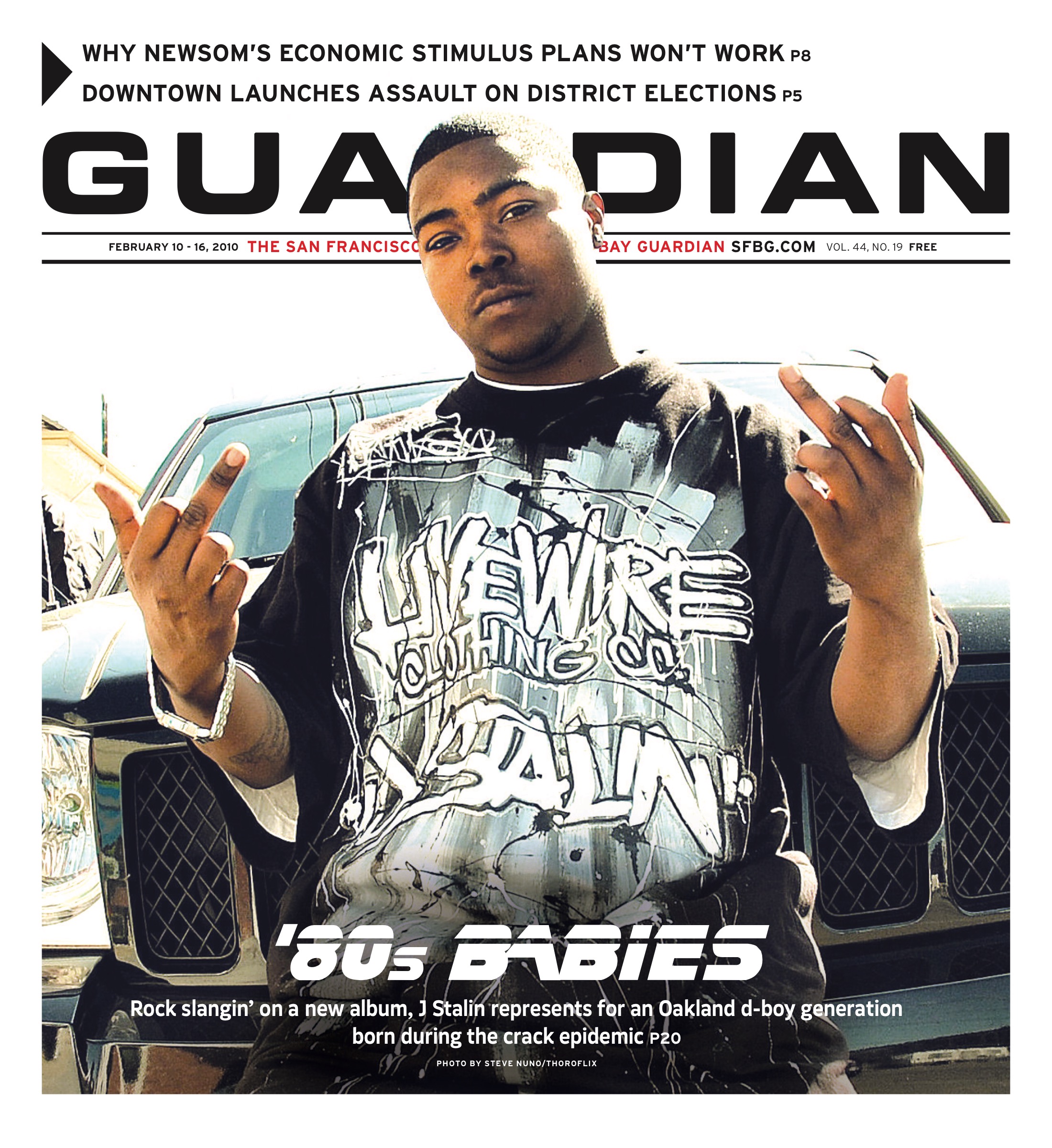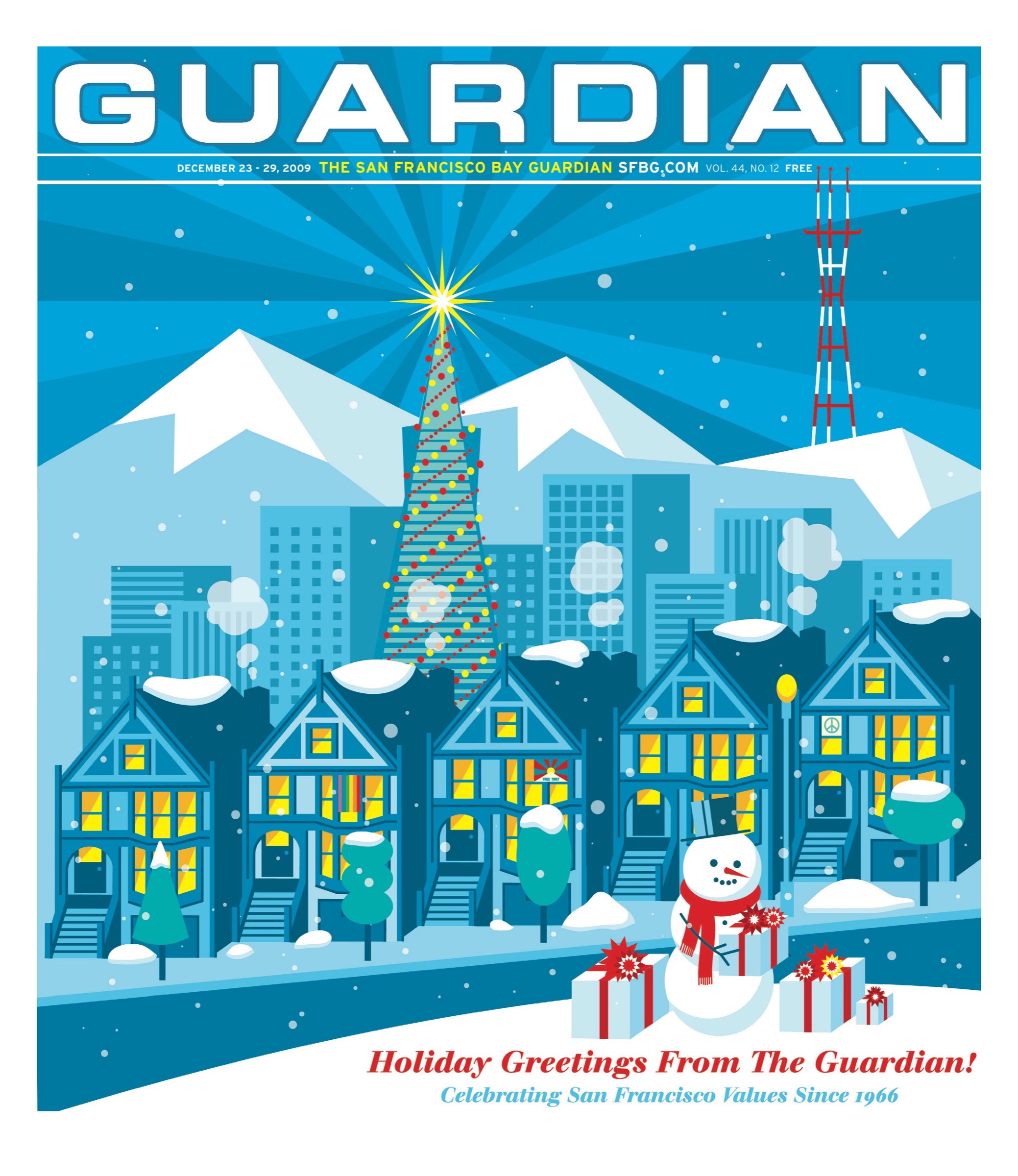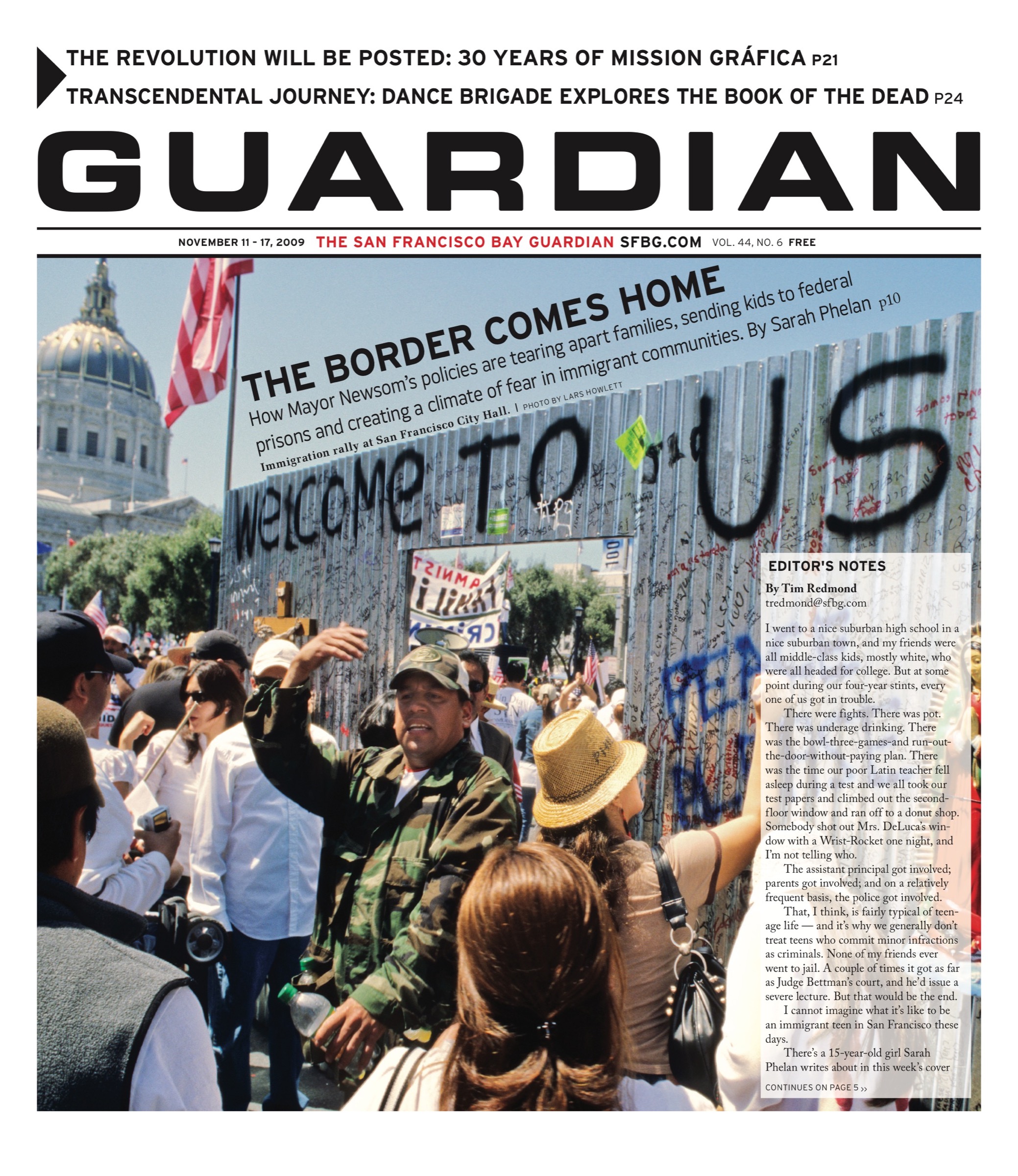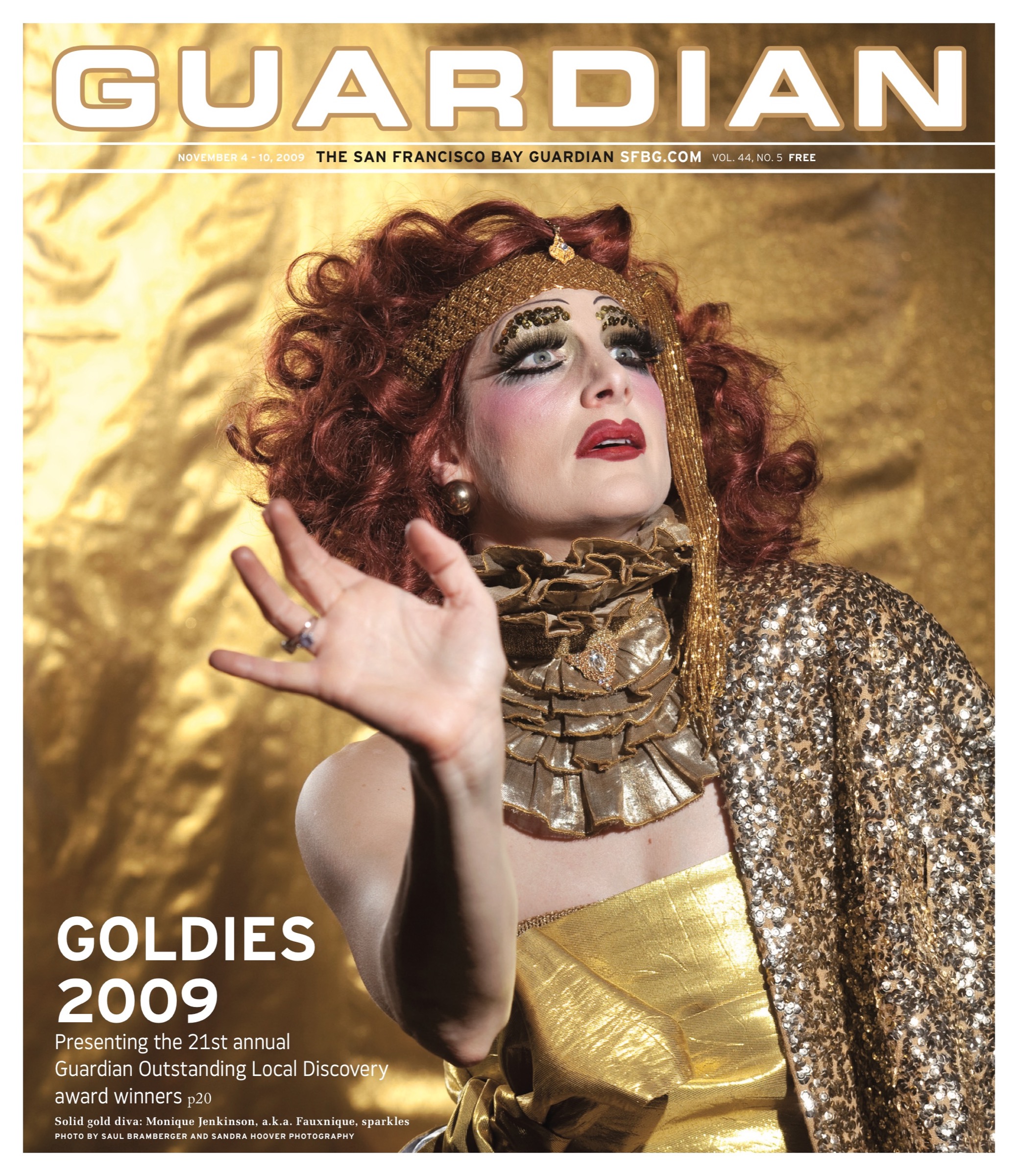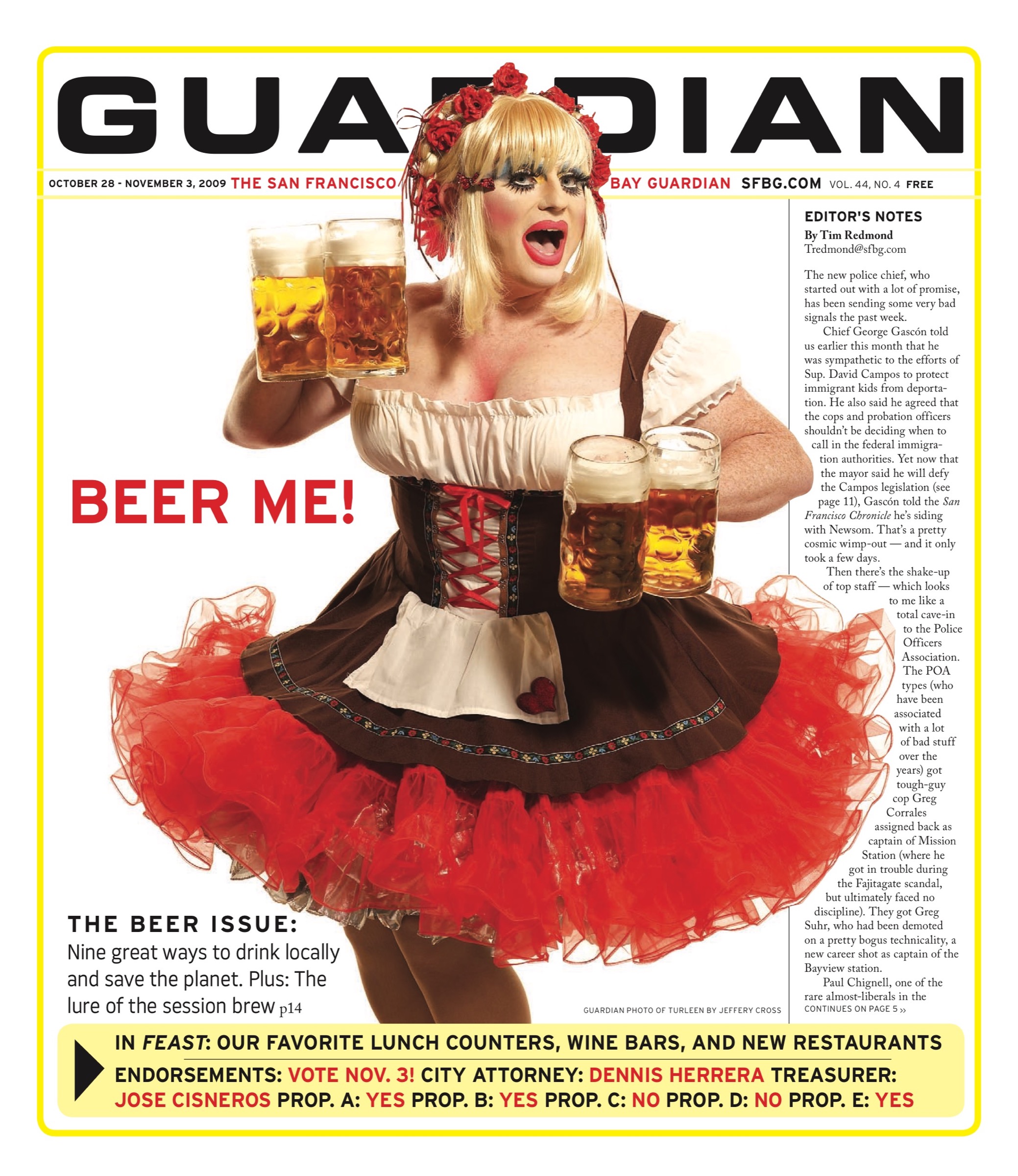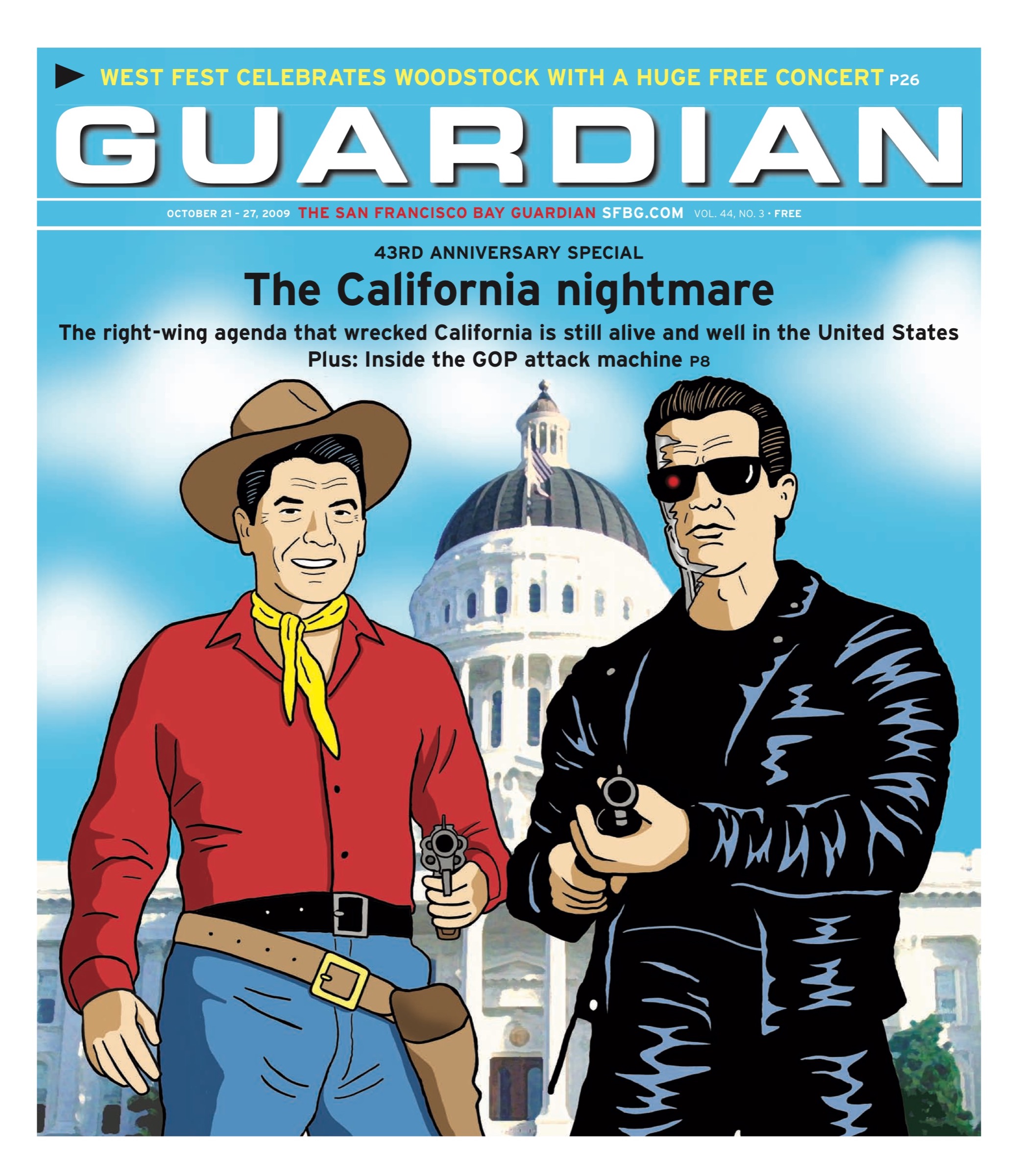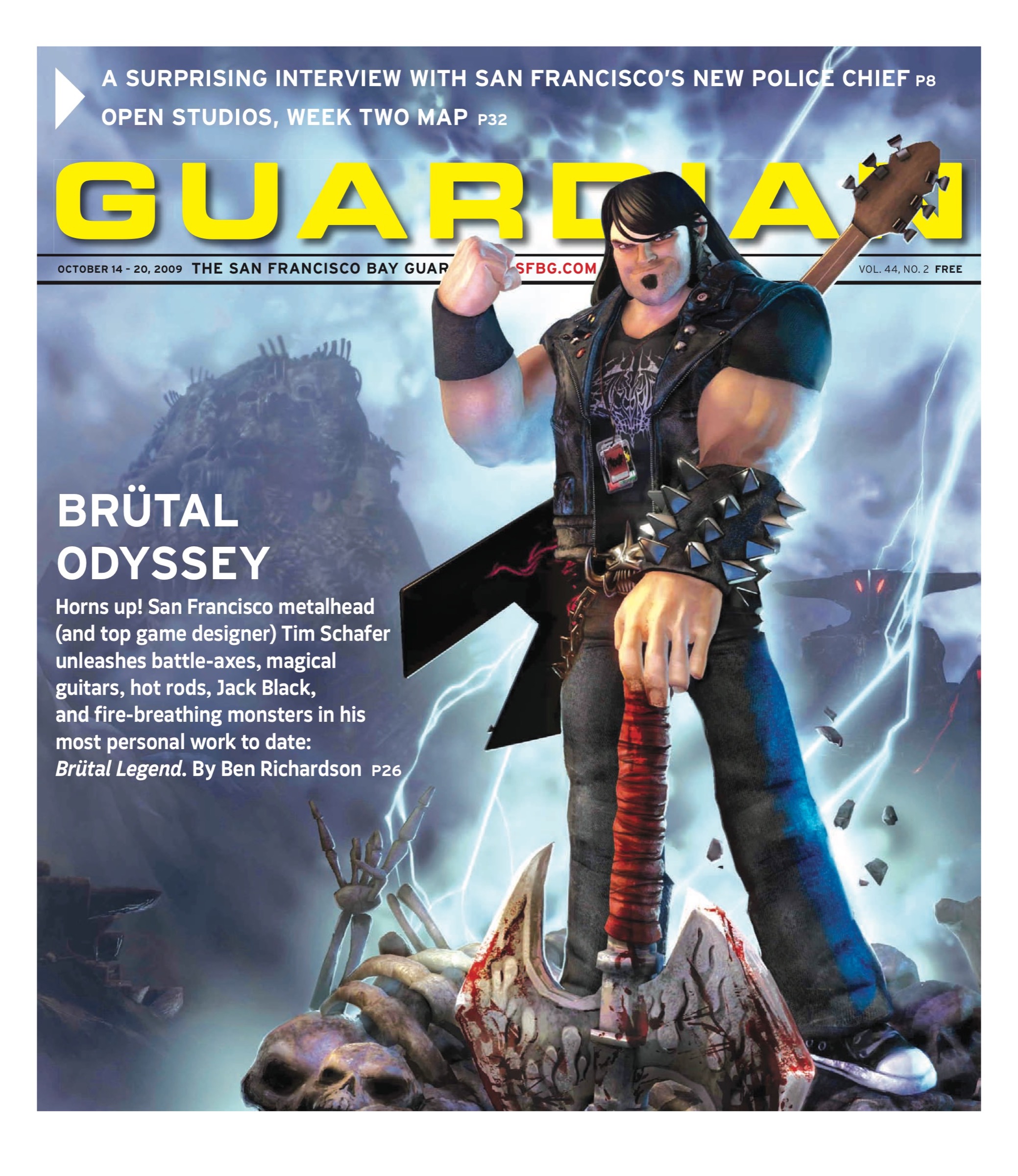arts@sfbg.com
>>Read Robert Avila’s interview with Joe Goode here
DANCE/THEATER Walking behind the tour guide who led us through the old San Francisco Mint’s elegant rooms for the Joe Goode Performance Group’s striking Traveling Light, I kept thinking of the Medicis and the Ming Dynasty. For their own selfish purposes, these corrupt supercapitalists commandeered and bought great beauty, of which we are the beneficiaries. On a more modest scale, the Mint, as so accurately described by Goode, was a temple of money. It was also a splendidly designed locus of hope for ordinary Joes and Janes who placed their trust, and their cash, in a place that promised the security that an expanding, institution-building nation could provide.
That’s why the Mint’s exquisite architecture speaks loudest in the basement. Jack Carpenter’s magisterial lighting creates shrines to the ordinary citizens on whose shoulders the Mint — and the country — was built. Carpenter ignores the presence of chandeliers — in a basement of all places! — and places red spots along the brick walls, transforming the hallway into a gallery.
Deep inside the safes — protected by exquisitely crafted steel doors — Goode places his works of art: a woman knitting, another in a bathtub, a perhaps homeless couple, and a tea-drinking Victorian lady tied down by propriety. Masterfully, Carpenter’s murky lighting transforms them into silent witnesses of a problematic past. Yet the atmosphere feels like one of your favorite watering holes on a Friday night.
Upstairs, Goode moves his seven dancers, supplemented by eight additional ones, through the Mint’s ostentatious public rooms and stark courtyard. For the next hour, they bring to life finely designed mini-dramas that possess a diorama-like quality. Watched over by a splendidly uniformed Fire Marshall who is quite at home in the building’s opulence, Traveling Light becomes an elaborately designed machine with interlocking gears that shuttle witnesses from one station to another.
I happened to be with the people who first see wealthy and bored Damara Vita Ganley abandon her “exalted” position to mingle with the groundlings. Here, worldly goods mean clean water. At least, the thinking went, these folks have each other. Out of robust duets and trios two men peel off, sent into a better future. Noble sentiment, terrible dramatic ending.
In the courtyard, which suggests a prison yard thanks to Carpenter’s lighting and Goode’s omnipotent voice from above, Filipe Barrueto-Cabello struggles as a poor working man. Haunted and perhaps supported by female spirits, he is barricaded against the elements, but longs for beauty. Andrew Ward and Alexander Zendzian are marvelous as W.C. Fields-like storytellers. The courtyard yields one of the evening’s most poignant moments: Barrueto-Cabello hugging and losing some cabbages as a solo clarinet wails. (Jay Cloidt’s score is first rate and invaluable throughout.)
In one of the inside rooms, Carpenter covers the chandeliers and hangs empty picture frames to better facilitate a detailed trip down memory lane. Jessica Swanson, a proper middle class lady, muses about a summertime affair with a young man (Melecio Estrella) whose calloused hands linger on in her mind. Their stiff-limbed yet passionate struggle doesn’t need words to be eloquently rendered. Elsewhere, in a Virginia Woolf-like touch, Patricia West searches desperately for a quiet place to get her life on track. Buffeted by intruders, she is caught in a turmoil that has more than a current of violence. It leaves her wan, alone, with only the echoes of her own words.
The carefully-honed Traveling is a very special vehicle for Goode’s excellent dancers-actors-singers, who are well supported by the additional cast. At one point Cloidt gives a quartet a four-part a cappella harmony, and they sail through it with ease. Goode badly wants the world to be a better place, but that’s not why we keep watching him and listening to him. We go back because his work sings, dances, and speaks with rare eloquence. I think what we want — and get — is what Barrueto-Cabello hungered for: beauty.
TRAVELING LIGHT
Wed-Sun, 8 p.m. (also Fri.–Sat., 10 p.m.), through Aug. 1, $29–$44
The Old Mint Building
88 Fifth St., SF
(415) 561-6565

